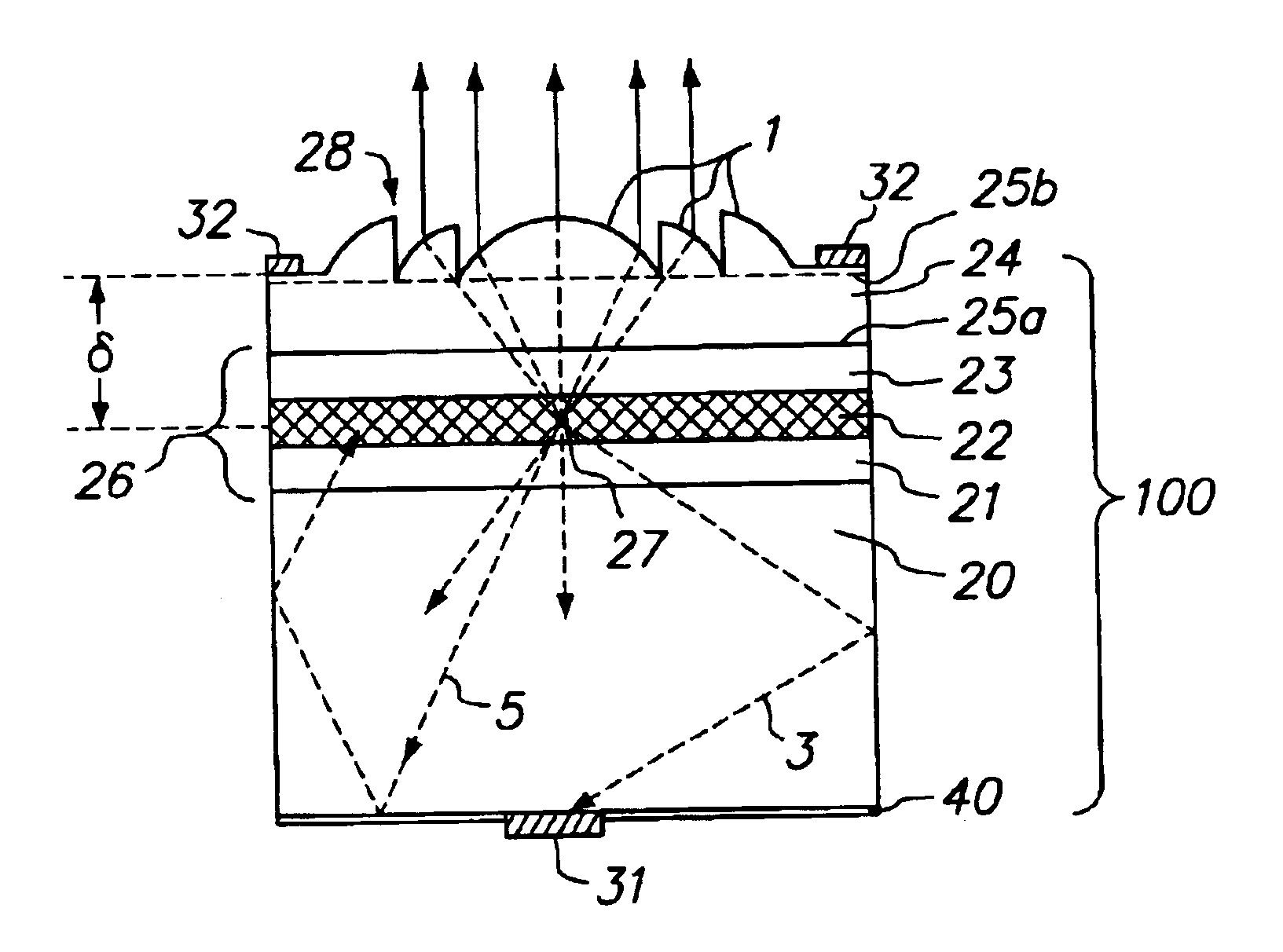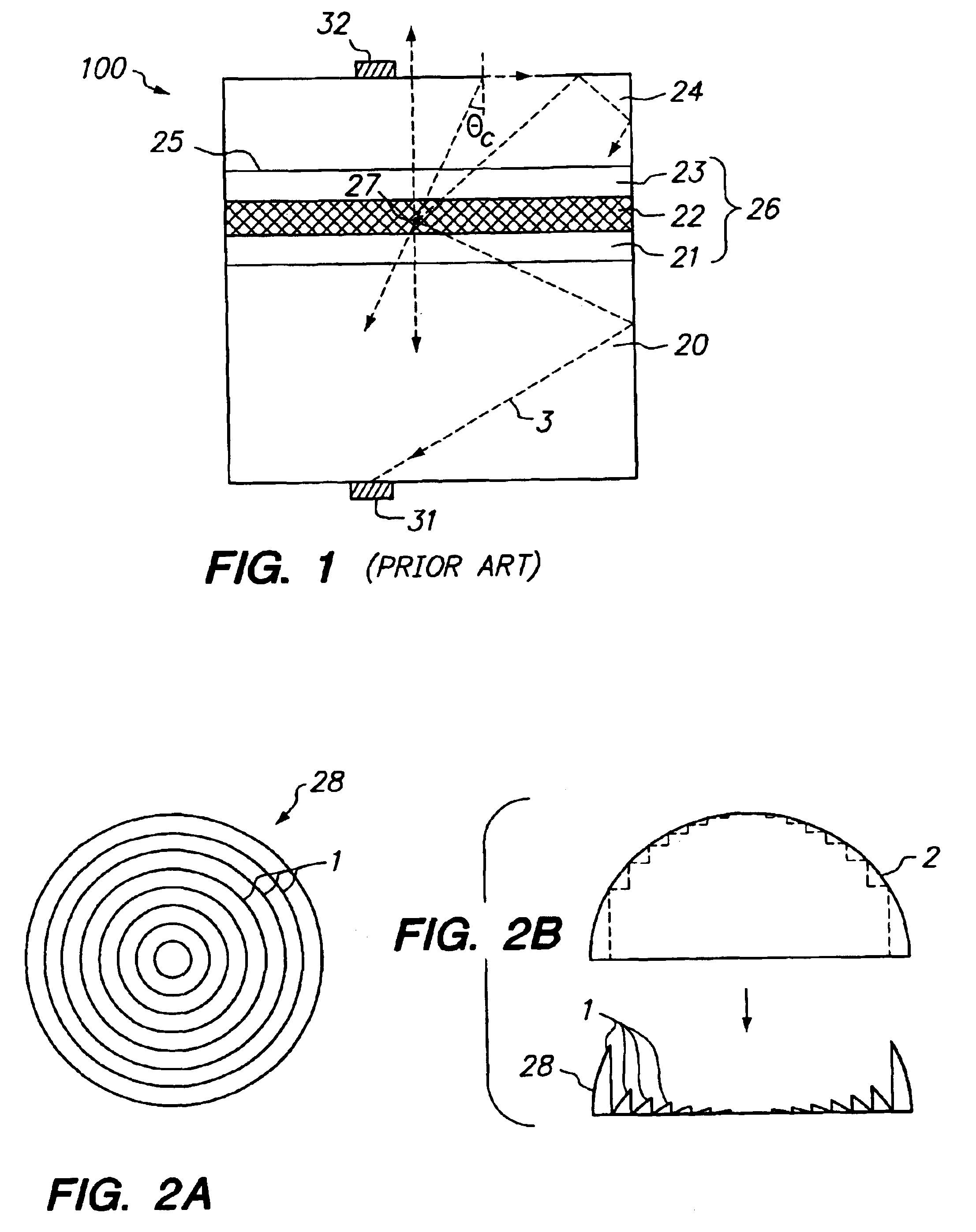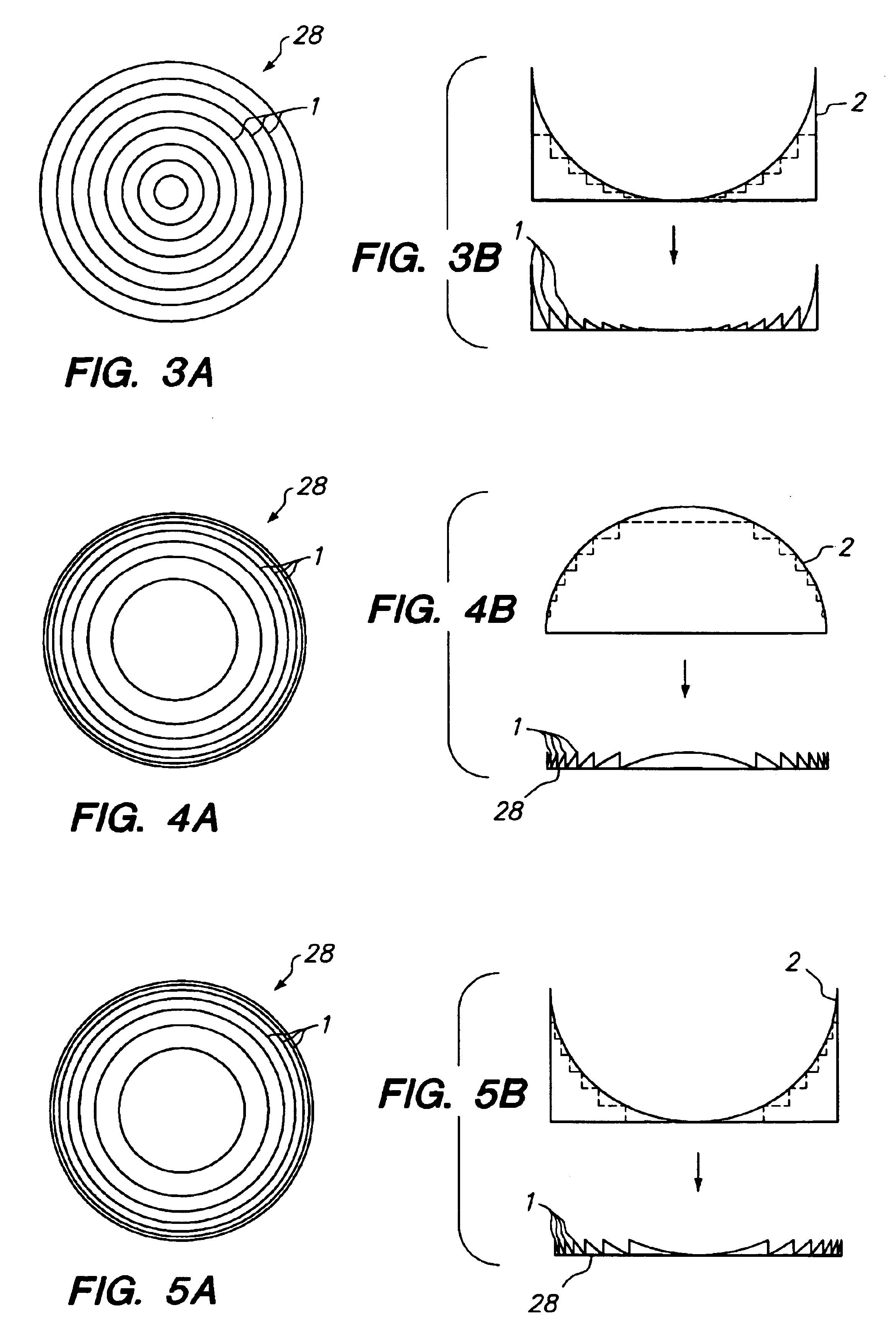Forming an optical element on the surface of a light emitting device for improved light extraction
a technology of light-emitting devices and optical elements, which is applied in the direction of optics, semiconductor devices, instruments, etc., can solve the problems of low light extraction efficiency, achieve the effects of improving light extraction, easy integration, and maximizing production efficiency
- Summary
- Abstract
- Description
- Claims
- Application Information
AI Technical Summary
Benefits of technology
Problems solved by technology
Method used
Image
Examples
Embodiment Construction
[0042]As used herein, the “extraction surface” refers to the surface of a light emitting device intended to be the light output surface. A light emitting device may have more than one extraction surface. For convenience of illustration, the figures show the extraction surface as the top surface. The light emitting device may be an LED. The light generating portions of the LEDs described herein may be conventional active layers of an LED. A “light emitting device,” as used herein, includes a device including at least one semiconductor light emitter 100. The present invention includes both stamping the surface of a light emitting device into an optical element and forming a Fresnel lens or a holographic diffuser on the surface of a light emitting device using any method including stamping. Although the present invention also includes a holographic diffuser formed on the surface of a light emitting device, the examples and descriptions refer mainly to Fresnel lens for clarity of illust...
PUM
 Login to View More
Login to View More Abstract
Description
Claims
Application Information
 Login to View More
Login to View More - R&D
- Intellectual Property
- Life Sciences
- Materials
- Tech Scout
- Unparalleled Data Quality
- Higher Quality Content
- 60% Fewer Hallucinations
Browse by: Latest US Patents, China's latest patents, Technical Efficacy Thesaurus, Application Domain, Technology Topic, Popular Technical Reports.
© 2025 PatSnap. All rights reserved.Legal|Privacy policy|Modern Slavery Act Transparency Statement|Sitemap|About US| Contact US: help@patsnap.com



